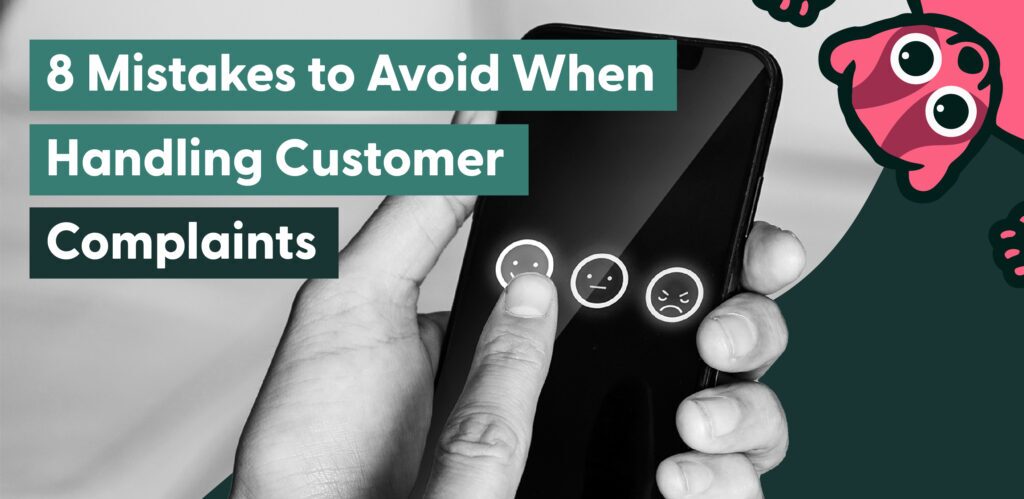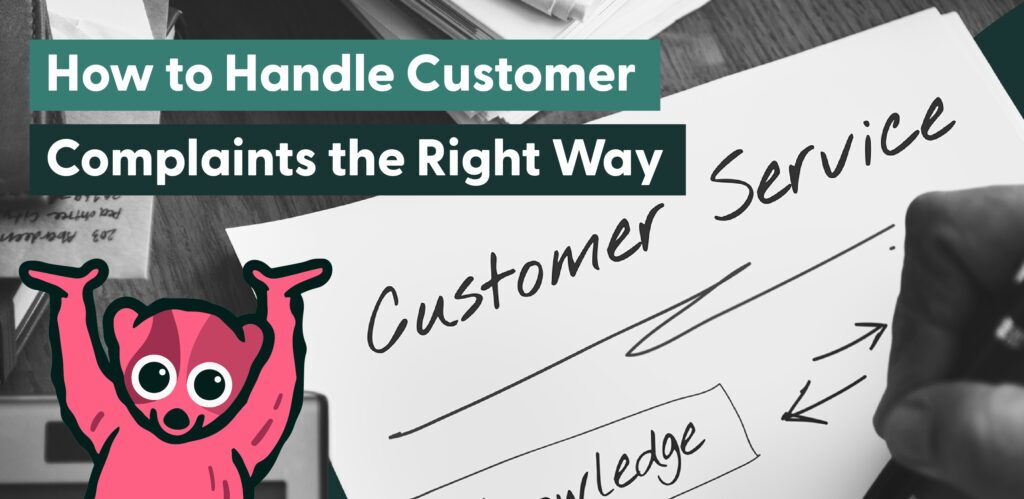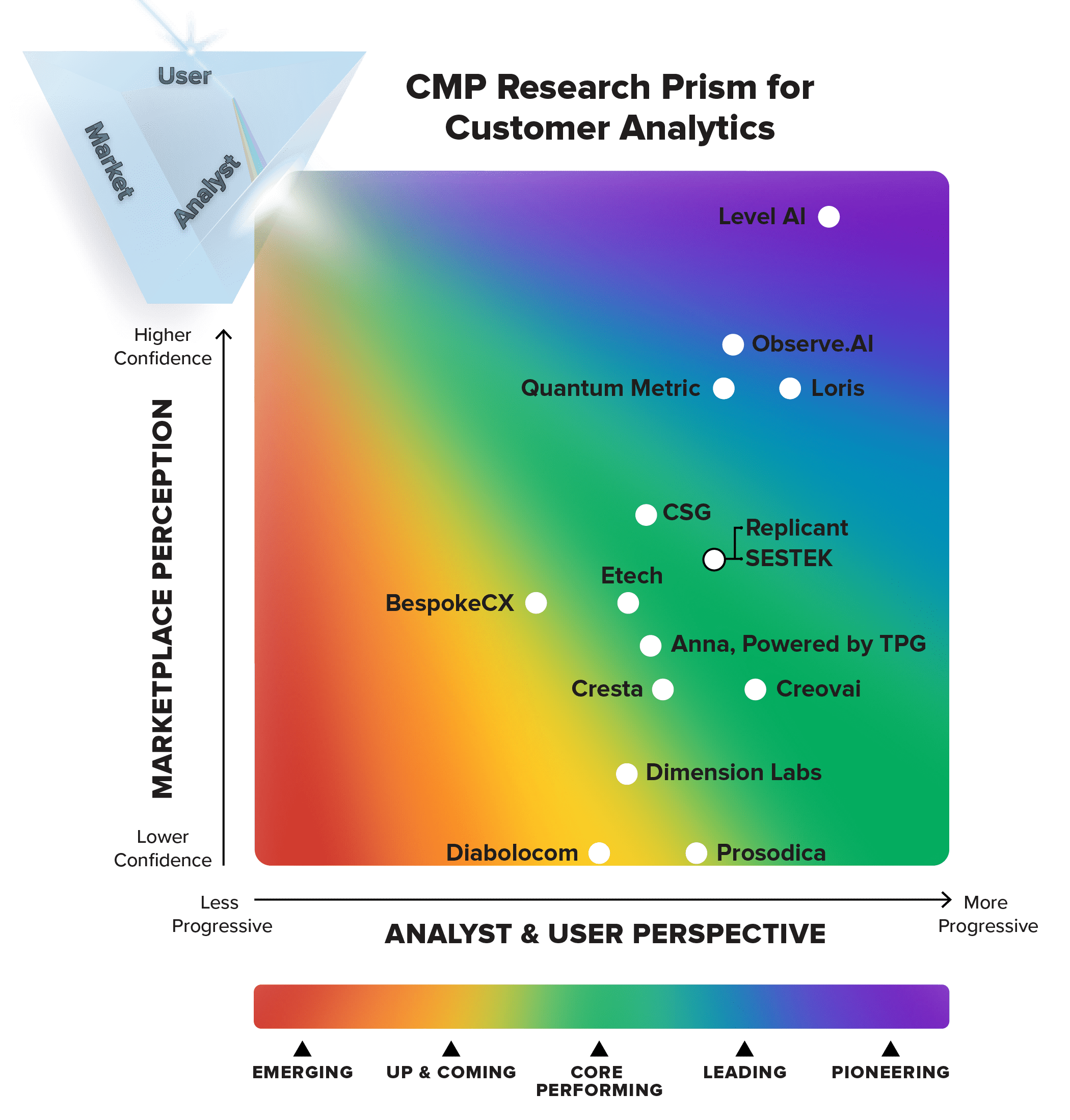
According to a recent article, only 32% of UK parcel delivery service Evri’s customers are satisfied with the company’s complaints handling, compared to an industry average of 45%. Customers have been upset about how long they had to wait for their items, that they were damaged when they arrived, or that they didn’t arrive at all. These unhappy customers complain online about Evri’s service, resulting in a disaster for their reputation.
If only a fraction of your customers are happy with your complaints handling, your company could face massive negative consequences. In fact, 91% of callers with a poor customer service experience won’t return to a business.
On the other hand, 83% of satisfied customers are more likely to give positive feedback and recommend your business than those who have bad experiences.
However, when there are large volumes of customer complaints and your agents are overwhelmed, customer satisfaction (CSAT) scores can quickly drop.
In this article, we’ll explain why effective complaint handling is important and walk you through a seven-step process for handling every customer complaint correctly.
Why Is Effective Complaints Handling Important?

There are several reasons why the way you handle customer complaints is essential:
✅ Customer loyalty and satisfaction
When complaints are handled effectively, it demonstrates to customers that your company values their concerns. Resolving issues quickly can turn a potentially negative experience into a positive one, leading to higher customer satisfaction.
Customers are also more likely to stay with a company if their complaints are resolved satisfactorily.
After more than one bad experience, around 80% of consumers would rather do business with a competitor. Handling complaints well can prevent customers from switching, ultimately increasing loyalty.
✅ Protect your revenue
Energy supplier Ovo Energy had to pay its customers over $3 million in compensation due to its failure to manage customer complaints. Over 1,395 customers received compensation after lengthy delays in resolving their complaints, sometimes up to 18 months.
In another example, Ola Electric’s shares fell by 40% when the company received over 10,000 customer complaints—which made headlines globally—due to unsatisfactory customer service.
If you want to protect your business from paying customers a fortune in compensation, you need more effective complaints handling.
✅ Improve brand reputation and trust
Every customer interaction is an opportunity to build or damage your brand’s reputation.
Due to endless customer complaints, two of Australia’s biggest supermarkets have faced significant reputational damage. Negative headlines in the media about overpricing their products have led to millions of dissatisfied customers.
Resolving customer complaints quickly and effectively can avoid disastrous situations. Delivering excellent service shows you care about your customers, enhancing your brand’s public perception and trust.
✅ Operational efficiency
Managing customer complaints handling effectively often involves resolving the issue on the first call or contact. This decreases the likelihood of the customer needing to call back with the same complaint, reduces call volumes, and helps your contact center run more efficiently.
A water company with over six million customers was experiencing challenges when conducting eligibility assessments for low-income consumers to receive a discount on their water bills. They had outsourced the assessment process, which often didn’t meet their customer service standards and caused customers to complain.
To remedy this, it started using a solution called the Better Off Calculator to bring assessments in-house to control the process. As a result, its customer drop-out rate has been reduced to zero, and its operational costs have been significantly lowered.
✅ Employee morale and engagement
The average call center agent turnover rate is around 30% to 40%, with some research pointing to as high as 60%.
When contact center agents are trained to handle complaints effectively, they can feel empowered and competent.
Well-implemented complaints handling processes can reduce stress and improve job satisfaction for agents, as they’ll feel they contribute positively to the customer experience. This can help you retain your agents and reduce turnover in your customer service department.
Managing Complaints Handling the Right Way
Now that you know why effective complaints handling is crucial to your business, let’s take a closer look at the steps you should take to resolve customer issues the right way:
Step 1: Ask the right questions and listen to the customer
Around 74% of consumers say that feeling valued and understood is the main reason they’re loyal to a business.
When customers reach out to your contact center with a complaint, they want their unique problem to be heard and understood. If an agent brushes off a complaint or doesn’t fully understand the problem, it can make things worse.
You should train and coach your agents to use active listening techniques to ensure each customer feels heard and understood.
Your agents should dig deeper into customer complaints by asking probing questions. Here are some examples of questions agents can ask:
🗣 “Could you walk me through what happened leading up to this issue?”
🗣 “Can you describe what you were expecting and how it differed from what occurred?”
🗣 “When did you first notice this issue, and has it happened before?”
Step 2: Display empathy in complaints handling
Showing empathy means your agents need to put themselves in the customer’s position to understand why they’re upset.
Empathy makes your agents’ jobs easier by helping them find the right solution for a customer’s issue.
If an upset customer feels an agent genuinely understands their frustration, they’ll likely be more willing to work toward a solution.
Some statements your agents can use to show empathy include:
🗣 Acknowledging the customer’s feelings: “I can understand why this is frustrating. Let’s work together to get this sorted out.”
🗣 Expressing concern: “I understand that this situation has been difficult. We appreciate your patience as we work on this.”
🗣 Validating the customer’s experience: “If I were in your position, I would feel the same way. Let’s work on a solution together.”
Step 3: Apologize to ease frustrations
One study has found that a well-timed apology during a crisis could effectively protect a business’s image and mitigate reputational damage. The research shows that apologizing to upset and frustrated customers is essential to exceptional service.
Apologizing to upset customers requires sincerity, empathy, and a commitment to resolving the issue.
Below are some ways contact center agents can apologize in a way that acknowledges the customer’s feelings and shows a genuine intent to make things right:
🗣 “I’m truly sorry for your experience with us. I understand how disappointing this must be.”
🗣 “I apologize for the frustration this situation has caused. This isn’t the experience we aim to deliver.”
🗣 “I’m really sorry for the inconvenience this has caused. I know your time is valuable, and I regret any disruption.”
Step 4: Find and present a solution
The most essential part of customer complaints handling is finding a solution to their issue as quickly and efficiently as possible.
Equip your customer service team with comprehensive guides and go-to solutions for common complaints so that they can find a solution quickly.
You should also give your agents the authority to make real-time decisions to tailor solutions to customers.
Vodaphone has seen a 17% improvement in customer complaints handling in the last year. They attribute this to enabling their customer service team to make decisions about solutions to complaints themselves rather than consulting management.
Additionally, Vodaphone launched an app that caters to 85% of its customers, speeding up complaint resolution times. The app is customers’ one-stop-shop for recharging on the go, paying bills, and ordering new SIM cards. It also allows customers to log complaints that can be resolved faster by Vodaphone’s customer service team.
Once an agent finds a solution, they should present it clearly and keep the customer informed throughout the process.
Agents should also personalize the solution they’re providing to the customer. One research paper found that customers who complain on X (formerly Twitter) prefer personalized responses over generic ones. These customers expressed a higher satisfaction rate than those who received robotic replies.
Step 5: Verify that the problem is solved
Once an agent has identified a solution to the complaint, it’s vital that they verify that the problem is solved.
Here are some ways agents can verify that their solution is working for the customer:
✔️ Ask for immediate customer feedback: If the solution involves real-time actions, such as resetting an account, updating information, or troubleshooting a feature, ask the customer to check immediately. For example, “Could you please verify on your end if everything looks good now?”
✔️ Guide the customer through verification steps: Walk the customer through steps to confirm their issue is resolved. For example, “Let’s go through your account together to ensure everything is in order.”
✔️ Use clear questions: Directly ask, “Does this resolve the issue for you?” or “Are there any other issues you’re still experiencing with this?”
✔️ Review the solution steps together: Briefly summarize the actions taken to resolve the issue so the customer knows what was done. For example, “To recap, we’ve updated your settings and confirmed that your service is fully active.”
✔️ Ask about any other concerns: Encourage the customer to share if they have any remaining doubts or concerns by asking, “Is there anything else I can do to make this right?”
✔️ Check for future concerns: Ask if there’s anything specific they’d like assistance with going forward, which can help preempt any potential related issues.
Step 6: Follow up after the resolution
Following up with a customer after they’ve complained is a powerful way to show that you genuinely care and are committed to their satisfaction with your brand.
Your follow-up should:
➡️ Mention the customer’s initial complaint.
➡️ Outline the solution that was provided.
➡️ Ensure the customer is happy with the resolution.
Like what you’re reading? Get the latest news and product updates delivered to you in our newsletter.
8 Mistakes to Avoid in Customer Complaints Handling

When complaints handling, your agents should be mindful to avoid common mistakes that can worsen the customer’s experience, damage your reputation, and escalate issues unnecessarily.
Here are some critical mistakes to avoid:
❌ Not listening actively: This includes interrupting the customer or failing to fully listen to their concerns before responding. Agents should listen attentively and let the customer fully express their issue. They can actively listen by repeating key points and confirming their understanding before providing a solution.
❌ Being defensive or argumentative: Agents should avoid taking complaints personally or responding defensively to them. They should remain calm and professional, showing empathy rather than taking a defensive stance. Agents should validate the customer’s feelings with phrases like, “I understand why this is frustrating.”
❌ Not taking ownership of the problem: Another common mistake is shifting blame to other departments or refusing to take responsibility for resolving the issue. Agents should show accountability even if the issue isn’t within their direct control.
❌ Offering generic responses: A generic, one-size-fits-all response doesn’t address the customer’s specific problem. Responses should be personalized based on the customer’s unique issue.
❌ Providing incomplete or incorrect information: This can worsen the customer’s frustration and lead to distrust. Agents should double-check information if they are unsure or consult a supervisor. It’s better to take a moment to confirm the answer than risk providing misleading information.
❌ Making promises you can’t keep: Another mistake is telling the customer that a solution will happen in a specific timeframe when the agent can’t guarantee it. Agents should set realistic expectations to avoid over-promising. If they need more time, they should communicate that they’ll follow up as soon as possible.
❌ Rushing the call: Trying to end the call quickly to meet key performance indicators (KPIs) can make the customer feel undervalued and unheard. Agents should prioritize thoroughness over speed, giving customers ample time to voice their concerns and ensuring a complete solution.
❌ Using negative language: Phrasing responses negatively only communicates what can’t be done to solve an issue. Agents should use positive language whenever possible to soften the impact of limitations and keep the conversation constructive.
❌ Failing to escalate when necessary: Not recognizing when an issue requires escalation to a supervisor can be problematic, as it can further frustrate customers. Agents should understand when and how to escalate complaints to ensure customers get the attention they need.
The Best Strategy for Complaints Handling is Avoiding Them Altogether
Effective complaints handling improves customer satisfaction, protects your brand’s reputation, ensures operational efficiency, and boosts employee morale.
However, it can be difficult to resolve complaints when multiple customers are contacting you at once.
Loris is a conversation intelligence platform that analyzes every interaction in your contact center to identify emerging issues early on.
This enables your management team to act on problems before they get out of hand and cause dissatisfied customers, high complaint volumes, and reputational damage.
Speak to a Loris expert today to find out how our platform is ideal for handling complaints effectively, helping you deliver excellent service, and avoiding negative implications for your business.

